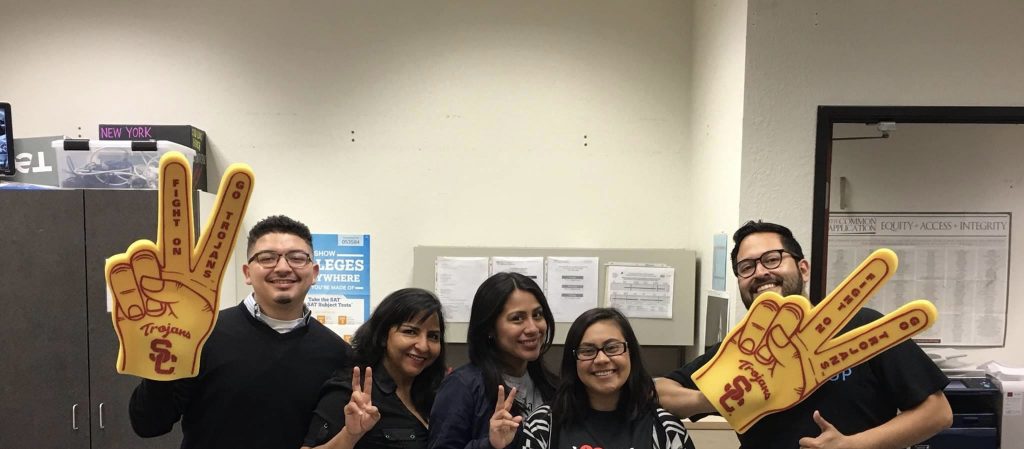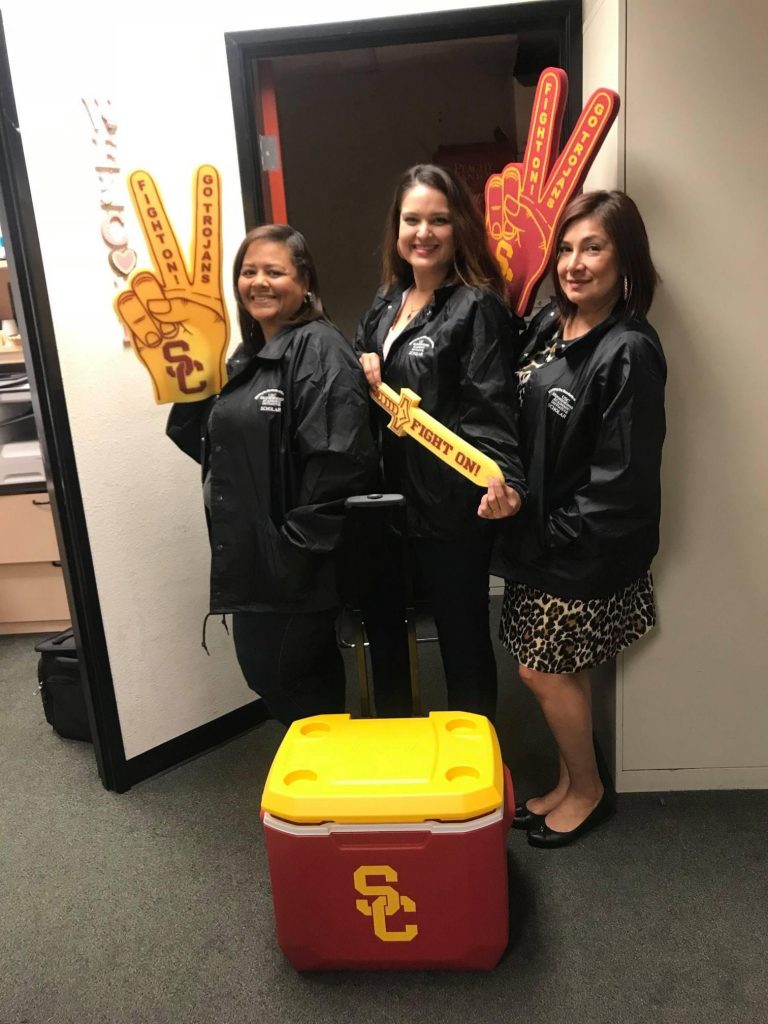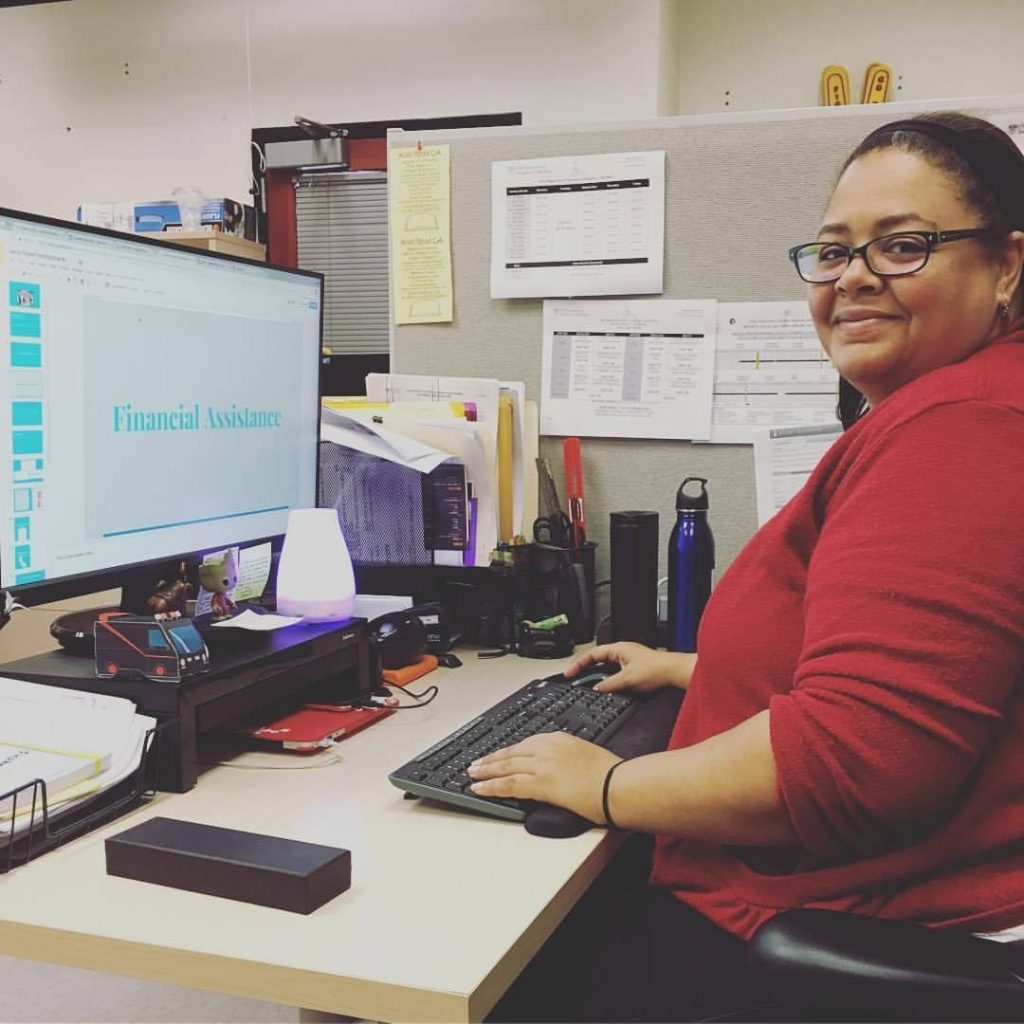How one local neighborhood initiative program in South Central is sending thousands of first-generation students to the University of Southern California on a full ride scholarship.
Being accepted into one of the country’s top private universities is not an easy task, especially when you’re up against applicants of a much more affluent background. While universities have made larger efforts to accept more applicants of diverse backgrounds in recent years, there still remains a large disparity between who is actually accepted.
Programs like the Neighborhood Academic Initiative (NAI), directed by Kim-Thomas Barrios, are tremendously helping to bridge the gap between low-income minority students and access to higher education.
Programs like the Neighborhood Academic Initiative (NAI), directed by Kim-Thomas Barrios, are tremendously helping to bridge the gap between low-income minority students and access to higher education.
The seven-year preparatory college enrichment program is designed to prepare students from South and East Los Angeles for admission to college or university but more specifically the University of Southern California. Since its origin the program has developed into a feeder school for USC and has successfully propelled over 1,000 students to the university.
Students first start being scouted around grade school based on academic performance and the ability to fully commit to the program because space is so limited. Some requirements that come with participating in the program include maintaining a grade point average of above 3.0, attending Saturday school as well as summer school.
This program requires a lot from their students given the large accolade that is awarded upon completion but it also asks a lot of their parents as well, “here at NAI we fully believe that students have a higher chance of succeeding when their parents are also involved in their schooling,” director Kim Barrios said. Parents are required to attend FDI meetings where they’re taught about the different ways they can support their child during this process.
Most of the program’s participants also tend to be first-generation meaning their parents are likely to have not completed any form of higher education therefore making the journey seem almost impossible but NAI provides the support needed to take on such a daunting task.
NAI has found that often low-income students are the forgotten demographic when it comes to college admission, they’re statistically deemed for failure before they’re even given a chance but this initiative works to prove that socioeconomic status should not define a student’s worth.
This program is so important because it’s not only cultivating the next few generations of our future through the promotion of higher education but it’s also working to break the stigmas surrounding low-income first generation college students. Their hard work and dedication is proving those who deem this body of students unworthy or incapable of succeeding completely wrong.
Dayanara’s Journey with NAI

Dayanara Saucedo who currently lives in the same 2 bedroom apartment she’s always lived in with her parents and two younger siblings, opened up about her long but worthwhile journey with the NAI program.
At just 11 years old Dayanara was at the top of her 6th grade class at Foshay Learning Center, when she was first scouted for the program.
“I was honestly surprised when they offered me a spot because so many of my other classmates were just as smart but I went with the flow and luckily it paid off.”
The aspiring photographer spent nearly seven years prepping for college with NAI where she gave up her Saturday’s and summers in between regular school to study for the SAT and perfecting her USC college application.
While the soon to be graduate may have it together now, there was a point in time when it seemed like there was no light at the end of the tunnel for her.
“It was hard to even picture myself applying because deep down I felt like I was wasting my time, as far as I knew only either crazy smart or crazy rich kids went to USC,” she said.
Unfortunately this is a notion that continues to deter most first-generation, low-income students from even considering applying to universities like USC.
The median family income of a student attending USC currently stands at $161,400 nearly tripled over the average family income of someone living in South Central L.A.
“My dad’s a part-time dishwasher and my mom sells baked goods from home so paying for school was never even an option.”
Dayanara revealed that although joining NAI gave her some hope of possibly attending her dream school and ultimately changing her life forever, she knew only about 19 of the 60 NAI participants her year would make the cut for USC.
Given that she would also be the first of her entire family to attend college the pressure to be accepted was doubled, “I felt completely overwhelmed to the point where I was having panic attacks even thinking about it” she said.
Sadly this also isn’t an uncommon feeling among most first-generation college students, this sector of students actually tends to have the highest rates of mental health problems due to a combination of things like wanting to bring honor to their family, breakaway guilt and embarrassment.
“It got to the point where I was genuinely considering dropping out or taking a gap year but fortunately I had NAI there to support me through it,” in hopes of easing her symptoms of anxiety Dayanara started seeing the licensed therapist the program has on standby for situations similar to hers.
After a couple weeks of scheduled therapy sessions, Dayanara revealed she was finally feeling like her old self again. “I underestimated how much just talking with someone who’s been through the same situation could help, it was reassuring to hear that I wasn’t alone.”
With the feelings of anxiety no longer crowding her brain Dayanara discovered her passion for photography, an activity her therapist suggested picking up whenever the anxiety started to creep back in. This hobby quickly turned into something she could see herself doing professionally.
“I went back and forth on the idea for a bit because I was also aware that a career in photography isn’t exactly the highest paying job but ultimately I knew I wouldn’t be fulfilled doing anything else,” she said.
The choice to change careers ultimately paid off, after coming clean to her parents and receiving an unexpected positive reaction she fully embraced the decision and it led her to the acceptance letter she’d always dreamed of.
Today Dayanara is set to graduate with her BFA from the Roski School of Art and Design, “it really has been a dream come true but I couldn’t have done it without the support of my NAI family. I’m forever grateful.”






